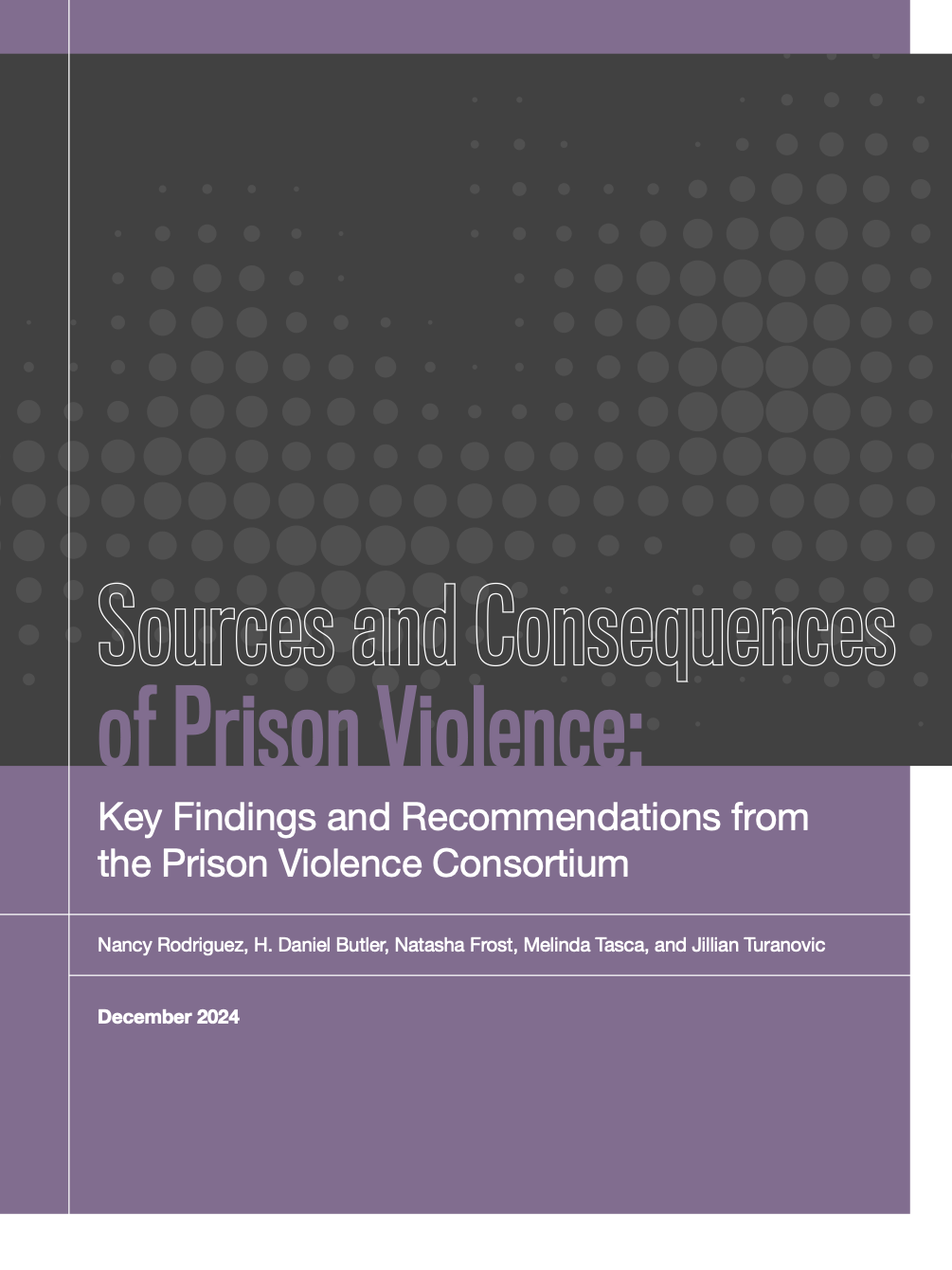
Project addresses its scale, sources and consequences
Prison violence remains a significant yet underreported issue in the U.S. criminal justice system, leading to unsafe conditions for both incarcerated persons and staff. To address this pressing problem, a team of researchers has conducted a study aimed at understanding prison violence to develop strategies for reducing and preventing it in correctional facilities nationwide.

 The researchers present their work in two recently released policy briefs — “The Dark Figure of Prison Violence: A Multi-Strategy Approach to Uncovering the Prevalence of Prison Violence” and “Sources and Consequences of Prison Violence: Key Findings and Recommendations from the Prison Violence Consortium.”
The researchers present their work in two recently released policy briefs — “The Dark Figure of Prison Violence: A Multi-Strategy Approach to Uncovering the Prevalence of Prison Violence” and “Sources and Consequences of Prison Violence: Key Findings and Recommendations from the Prison Violence Consortium.”
“Our work aims to shift the paradigm in how prison violence is understood, addressed and, most critically, prevented,” the authors note. “By providing a nuanced, data-driven perspective on this complex issue, we hope to catalyze meaningful changes in policy and practice. The ultimate goal is not just to reduce violence within correctional facilities, but to contribute to a more just, humane and effective criminal justice system overall.”
The work comes from the Prison Violence Consortium, a project made possible by funding from Arnold Ventures. The goal was to conduct a comprehensive review into the nature, causes and effects of prison violence. Led by Nancy Rodriguez, UC Irvine professor of criminology, law and society, the research team includes correctional experts H. Daniel Butler of Iowa State University, Natasha A. Frost of Northeastern University, Melinda Tasca of University of Texas at El Paso and Jillian J. Turanovic of University of Colorado Boulder.
 Consortium members include the Arizona Department of Corrections, Rehabilitation and Reentry; Colorado Department of Corrections; Massachusetts Department of Corrections; Ohio Department of Rehabilitation and Correction; Oregon Department of Corrections; Pennsylvania Department of Corrections; and the Texas Department of Criminal Justice.
Consortium members include the Arizona Department of Corrections, Rehabilitation and Reentry; Colorado Department of Corrections; Massachusetts Department of Corrections; Ohio Department of Rehabilitation and Correction; Oregon Department of Corrections; Pennsylvania Department of Corrections; and the Texas Department of Criminal Justice.
Among their findings:
- The vast majority of guilty violent infractions can be attributed to a small minority of incarcerated individuals.
- Most violence (71 percent) occurred between incarcerated persons, while 29 percent was directed at staff, according to violent incident reports.
- Physical injuries were reported in 42 percent of assaultive or fighting incidents between incarcerated persons and 21 percent of staff assault incidents.
- Most interviewed incarcerated persons said violence changed how they “do time,” leading to social withdrawal, hypervigilance, distrust, and vulnerability.
- Staff reported frequent threats and physical acts of violence and poor mental health.
The researchers present several recommendations, including:
- creating a uniform definition of prison violence,
- implementing an “injury” tool to document violence-related injuries, and
- using a detailed, dynamic risk assessment to identify high-risk individuals.
Additionally, they recommend providing evidence-based treatment programs, expanding staff training and enhancing mental health resources and support to address prison violence effectively.
Now, as Rodriguez described, the Prison Violence Consortium is expanding to include additional state prison systems and working with existing partners to design state-specific solutions.
“Our work illustrates how independent researchers and government can work in meaningful partnerships to co-develop solutions for complex problems,” Rodriguez explained on Episode 10 of the Pracademically Speaking, a podcast of the Pennsylvania Department of Corrections’ Bureau of Planning, Research & Statistics.
By implementing the Consortium’s recommendations and building on its work, she said, state correctional systems can work toward developing reliable metrics of violence, understanding and addressing institutional mechanisms that hinder accurate violence reporting, and pursuing interventions that will significantly reduce the harm experienced by incarcerated persons and staff.